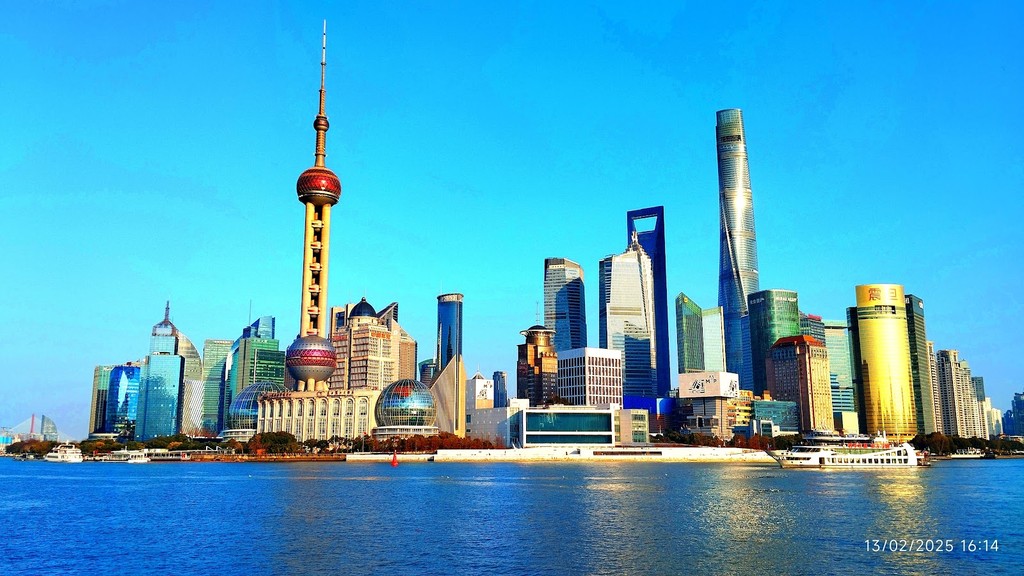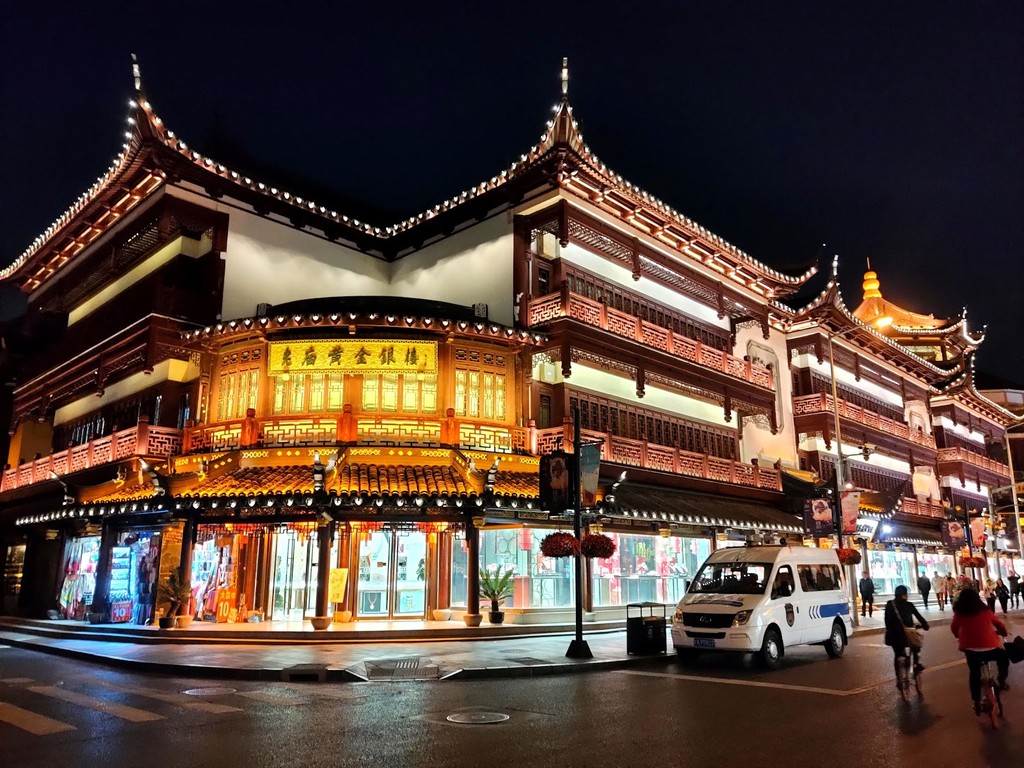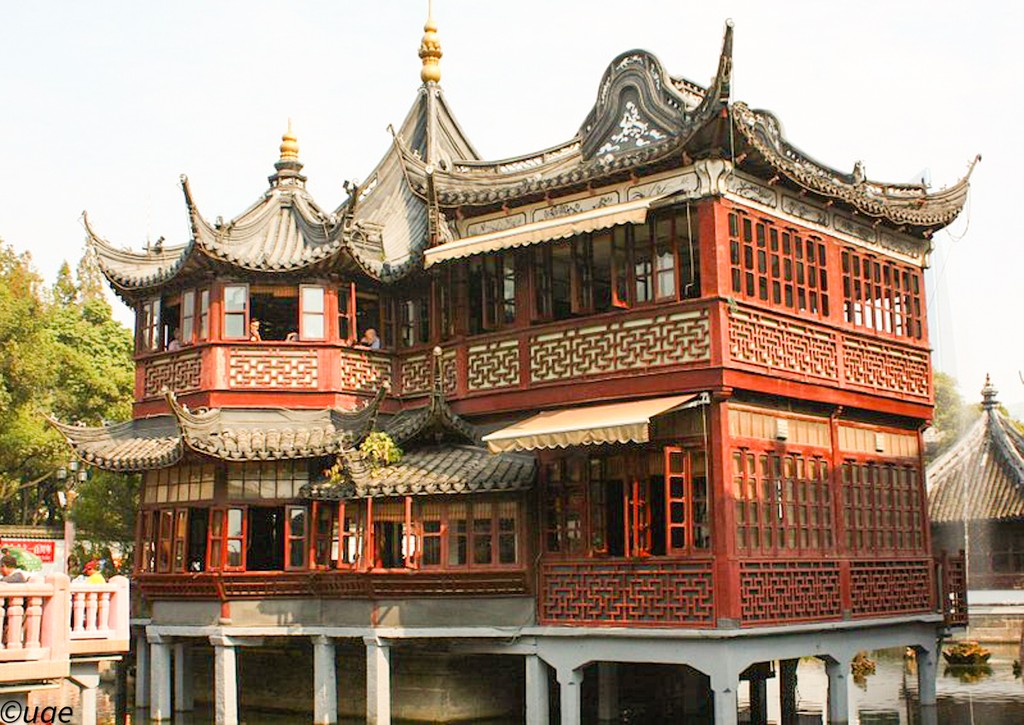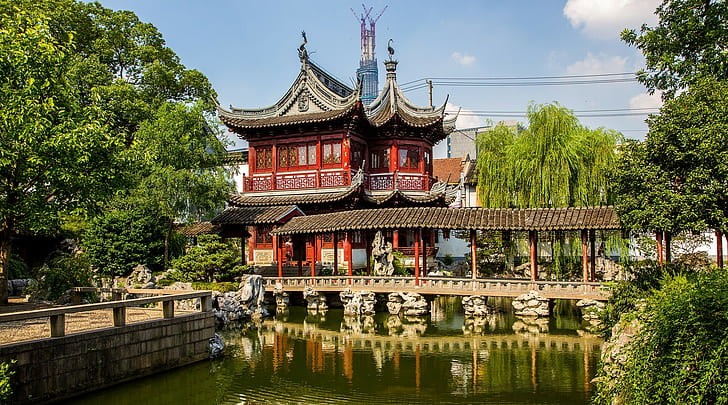Shanghai's Timeless Treasures Unveiled
Join us on a captivating free walking tour through Shanghai's rich history, where ancient culture meets modern marvels in a vibrant urban landscape.
Time
3 Hours
Stops
4 Places
Distance
2.7 km
The Bund (Waitan)
Begin your journey at The Bund, the iconic waterfront area showcasing Shanghai's historical architecture and a stunning view of the modern skyline across the Huangpu River.

The Bund (Waitan) (Source: Google Maps)
The Bund, or Waitan, is a renowned waterfront area in Shanghai that showcases a harmonious blend of architectural styles from the 19th and early 20th centuries. This iconic promenade features a series of impressive buildings, including Gothic, Baroque, and Art Deco structures, that reflect the city’s colonial past. Spanning along the Huangpu River, it offers stunning views of the modern skyline of Pudong, characterized by skyscrapers like the Oriental Pearl Tower and the Shanghai Tower. The Bund has been a focal point of Shanghai's history, serving as a hub for trade and commerce. Today, it stands as a symbol of the city's rapid modernization while retaining its historical charm, making it a must-visit landmark for both locals and tourists.
Shanghai Old Street
Just a few minutes from the City God Temple, Shanghai Old Street is a vibrant area that reflects the city's rich commercial history with its traditional shops and architecture.

Shanghai Old Street (Source: Google Maps)
Shanghai Old Street is a vibrant area that captures the essence of the city’s rich commercial history. This bustling thoroughfare is lined with traditional shops, teahouses, and restaurants, showcasing the architectural style of old Shanghai. Visitors can explore a variety of local crafts, souvenirs, and street food, making it a perfect place to immerse oneself in the local culture. The street is not only significant for its commercial activities but also for its cultural heritage, reflecting the lifestyle and traditions of the city over centuries. The atmosphere is lively, with locals and tourists alike enjoying the sights and sounds of this historical district, which serves as a reminder of Shanghai's evolution from a small fishing village to a global metropolis.
City God Temple of Shanghai
Adjacent to Yu Garden, this temple is a spiritual center and a great place to experience traditional Chinese religious architecture and local culture.

City God Temple of Shanghai (Source: Google Maps)
The City God Temple of Shanghai, located near the bustling Yu Garden, is a significant religious site that embodies traditional Chinese architecture and culture. Built during the Ming Dynasty, the temple is dedicated to the city’s guardian deities and serves as a spiritual center for locals. The intricate design features beautiful carvings, vibrant colors, and ornate roofs, which are characteristic of classical Chinese temples. Visitors can experience the rich cultural practices associated with the temple, including incense burning and various offerings made by worshippers. The surrounding area is filled with shops selling traditional snacks and crafts, enhancing the cultural experience. The temple not only serves as a place of worship but also as a symbol of the city’s deep-rooted spiritual traditions, making it a fascinating stop on any exploration of Shanghai.
Yu Garden (Yuyuan Garden)
A short walk from The Bund, Yu Garden is a classic Chinese garden from the Ming Dynasty, offering a serene escape with its beautiful pavilions and rockeries.

Yu Garden (Yuyuan Garden) (Source: Google Maps)
Yu Garden, or Yuyuan Garden, is a quintessential example of a classical Chinese garden dating back to the Ming Dynasty. Spanning over 20,000 square meters, this beautifully landscaped garden features pavilions, rockeries, ponds, and lush greenery, designed to create a serene escape from the bustling city. The garden showcases exquisite architectural elements, including traditional Chinese roofs and intricate stone carvings. Each section of the garden is thoughtfully designed to evoke harmony and tranquility, reflecting the principles of Feng Shui. Yu Garden also holds historical significance, having served as a private garden for a wealthy family before becoming a public attraction. Adjacent to the garden, visitors can explore the Yuyuan Bazaar, where they can find local crafts, snacks, and souvenirs. The garden is a peaceful oasis that offers a glimpse into the artistry and philosophy of traditional Chinese landscape design.

Your travels, your rules.
Create your own Free Walking Tours.
Set your preferences, distances and anything you want to do or see.
Completely free, no payment required.